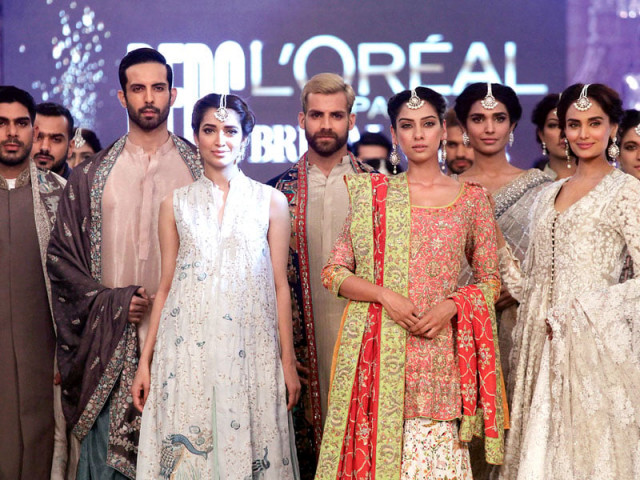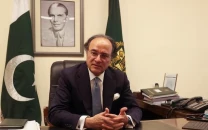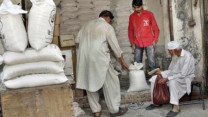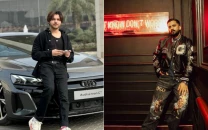PLBW 2014: A walk down the fashion aisle
As designers take a final bow at PLBW 2014, we round-up of what we developed a penchant for, what failed to enchant

PLBW 2014: A walk down the fashion aisle
Bridal fashion is a bit of a balancing act. Combining creativity, luxury and tradition into a striking statement is an art that is testament to a designer’s originality and craftsmanship. Playing with structure and silhouette to enhance embellishments is a skill that only the best fashion collections can flaunt. At the PFDC L’Oréal Paris Bridal Week (PLBW) 2014, several collections ticked all these boxes.
Sana Safinaz, Fahad Hussayn, Misha Lakhani, Nomi Ansari, Zara Shahjahan, Shamaeel Ansari and Sania Maskatiya were all impressive in their own way. From Nomi’s masterful use of colour to Fahad’s tasteful embroidery, they all had their own strong suits. Sana Safinaz brought freshness to the ramp with their beautiful print-lined worked dupattas.

Zara’s intricate shawls with aari work added an element of opulence to a polished new look from her. Shamaeel’s regal creations exuded elegance, and Misha injected the cool factor with kaftans and a laidback vibe into her collection.
Sania Maskatiya dialled back her previous experimentalism with a show that struck the right balance between creativity and wearability. She included trendy pieces, such as high-waisted shararas, printed pants and a sari over a lehenga paired with delicate floral motifs in net and silk. All these designers exhibited variety, artistry and their distinct aesthetic.
There were plenty of other hits on the ramp. The first half of Hassan Sheheryar Yasin’s show was as masterful and original as any other during the event. Nida Azwer showed some stunning pieces and the artistry of her pieces was unmatched. One trailing lehenga stood out particularly for its intricate thread work, featuring birds, trees and animals. Some of the outfits, however, were a little underwhelming for the ramp.
Nickie Nina presented some exceptional pieces in pale pastels featuring gotta embroidery. Their collection would have been much better if they had expanded this theme further. Saira Shakira showed a collection that was both experimental and beautiful, comprising shirt collars, half capes and twists on saris. Not everything worked but the good outweighed the bad. Ali Xeeshan featured far too many lehengas, but his gotta work was inspired.

As expected, there were some major misses. A bridal collection is a huge investment, and so there is a tendency among some designers to stifle their creativity on the altar of commercial considerations. When people are paying the sort of prices that designer creations cost these days, they want their clothes to scream their designer pedigree.
A designer bridal or formal jora should not look like something knocked out by a shop in Lahore’s Liberty Market or Karachi’s Tariq Road. Similarly, original embroidery is insufficient when combined with tired silhouettes. Putting one pretty jora after the other on the ramp does not make an impact at fashion week.
The ‘Rising Talent’ section, in particular, did not live up to expectations. Given the sort of capsule collections this segment produces during the pret week, it was disappointing to see the general lack of excellence in this segment. Mahgul stood out from the others in this respect. There was artistry in her embroidery and her cuts were creative, although not entirely successful. Everything, from standout jewellery to shoes and bags, was produced in-house for a collection that reflected both talent and diligence.

There were also quality issues and not just among the ‘Rising Talent’ section. Up close to the ramp, one could spot ripped seams, dangling threads, safety pins and falling beads. Backstage isn’t the most cherishing environment for outfits, but these sorts of faults are unacceptable at an event of this stature. Only a handful of designers were guilty in this regard, but given the vaunted selection process, this is not something that should happen at all.
PLBW remained a great showcase for some of the best Pakistani bridal fashion. The event also offered some great styling tips. Outlandish creations, such as Shamaeel’s floral headpieces and Fahad’s Thatta puppet sticks are just for the ramp, but there were plenty of other real-life styling tricks worth stealing. The way Misha put her models in khussas, the polki arm-band worn by Nadia Ali for Sana Safinaz, Karma’s oversized jhumkas and the way Shamaeel reverse-knotted a shawl around a model’s neck are all great ways to add a little oomph to a look.
Overall, there was more of an emphasis on bridal formals than on wedding joras on the ramp. Several designers cited the fact that they prefer not to repeat their actual bridal outfits, preferring to give brides a unique look for their big day. Another reason is probably that bridal formals give designers a greater opportunity to display their design vision.
While there were many common themes, from layering to jackets to high-waisted ghararas, what stood out was the range of aesthetic dominating the Pakistani fashion industry. Ali and Nomi excel at bold, colourful creations, while Nida and Ammara Khan’s muted palettes have an entirely different appeal.
From Karma’s bling to Shamaeel’s rich layers, from HSY’s edgy ‘Divine Decadence’ to Sana Safinaz’s sophisticated contemporary ethnic wear, there was something for everyone. Isn’t it lucky that Pakistani weddings are multi-event affairs? With so many gorgeous outfits to choose from, picking just one look is well nigh impossible.
Oxford-grad Salima Feerasta is a social commentator and lover of style in any form or fashion. She tweets @karachista
Published in The Express Tribune, October 5th, 2014.
Like Life & Style on Facebook, follow @ETLifeandStyle on Twitter for the latest in fashion, gossip and entertainment.


















COMMENTS
Comments are moderated and generally will be posted if they are on-topic and not abusive.
For more information, please see our Comments FAQ